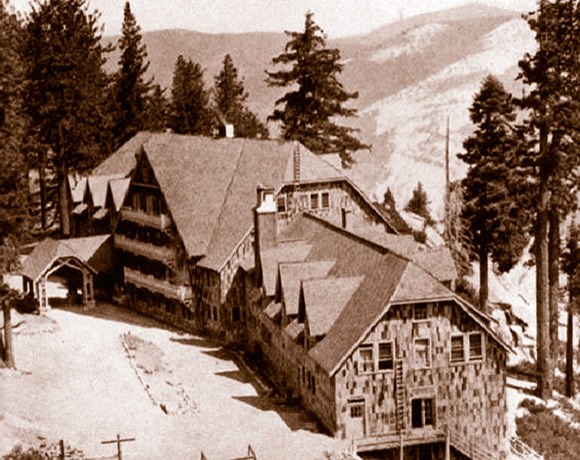Last updated: July 31, 2025
Article
Historic Ashes: Glacier Point Hotel 1969

The National Park Service has the honor and responsibility to protect many things, including the historic structures found in many of the 398 park units. Some history is tangible and can take us back to a time and place of our past, so we may come to know and understand it. These buildings and artifacts tell a story of our national parks and of the American way of life--a story of who we are. Use this look back at the losses of our American and NPS heritage to inspire and direct our efforts to protect what still remains.
Sitting in the stone amphitheater perched atop Glacier Point 3,000 feet above Yosemite Valley, it is difficult to imagine that the historic Glacier Point Hotel and McCauley’s Mountain House once stood in this very spot, with the guests sitting on the front porch taking in the same incredible view of Yosemite Valley, Half Dome, Nevada and Vernal waterfalls, and the Yosemite high country.
It was 1871 when James McCauley obtained permission from the Yosemite Board of Commissioners to build and operate a toll trail to and from Yosemite Valley at the base of Sentinel Rock and climb over 3,000 feet to Glacier Point. With the new convenient access, innkeeper Charles Peregoy built “The Mountain House” at the overlook in 1873. Hikers ascending McCauley’s Four Mile Trail to reach Glacier Point could now rest for the night at the small hotel with its stunning views. Campfires were often built to entertain the guests at the overlook and ashes were pushed over the edge. From Camp Curry in the valley below the falling ashes looked like a waterfall of fire. This would start a Yosemite tradition: the Firefall.
“There may have never been a better balcony view than the one from the Glacier Point Hotel,” which was completed in 1917. “The Glacier Point Hotel, which is itself entitled to the distinction of being classed as one of the features of the region. Affording accommodations for some two hundred guests, and embodying, as it does, all the comforts and conveniences of the most modern city hotel with its own delightfully informal and rustic atmosphere, it stands unique among the hotels for which our western country is justly famous. Visitors stopping overnight at Glacier Point will be lulled to sleep by the drowsy murmur of Vernal and Nevada Falls pouring into Merced Canyon far below, and throughout the day will be treated to a series of scenic spectacles that can hardly be duplicated anywhere else on earth” (Wilson, 1922).
In the winter of 1968–1969 the Glacier Point Hotel was damaged by heavy snow pack and was closed for business that summer. The Firefall was cancelled permanently. A few employees lived in the old Mountain House (then the oldest building in the park), selling snacks to Glacier Point daytime visitors.
On July 10, 1969 an electrical fire began in the lower floor of the unattended Glacier Point Hotel. The pile of red fir bark left from the Firefall next to the hotel added fuel to the fire. Structure fire response was 28 miles away by mountain road. The fire completely destroyed the hotel, Mountain House, and many trees.
Like the famous Firefall, the Glacier Point Hotel and McCauley’s Mountain House would pass into history and become only memories for those who had the opportunity to visit.
References
Wilson, Herbert Earl. The Lore and the Lure of the Yosemite: The Indians—Their Customs, Legends, and Beliefs, and the Story of Yosemite, 1922.
